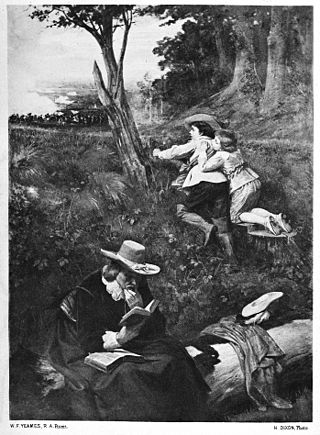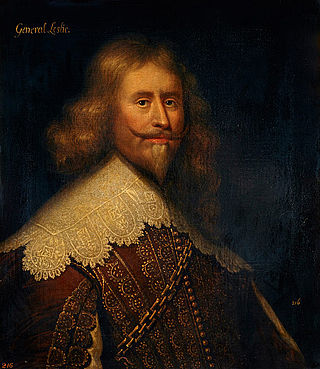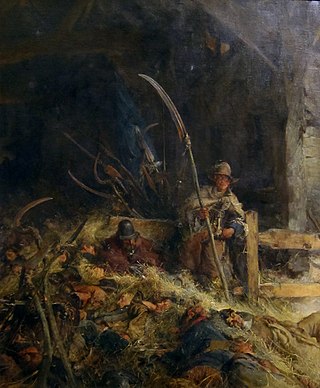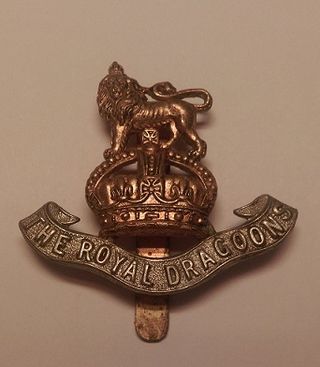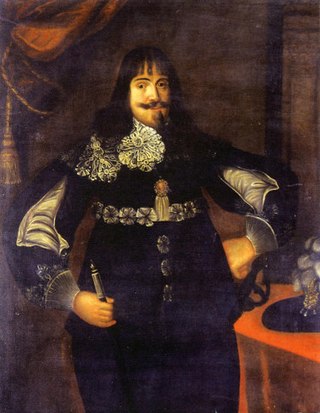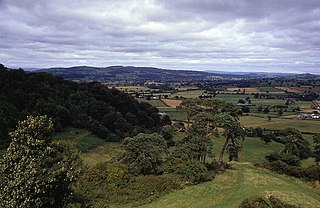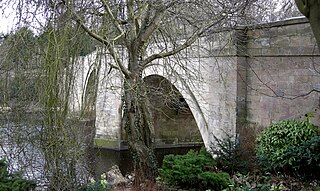Royalists

Royalist Army
(2500 Horse, 7750 Foot, 14 guns)
- General Prince Rupert of the Rhine
- Lieutenant General Lord Byron
- Sergeant Major General of Horse Sir John Urry (changed sides shortly after the battle)
- Prince Rupert's Lifeguard (140)
- Prince Rupert's Regiment (500)
- Lord Byron's Regiment
- Colonel Marcus Trevor's Regiment
- Sir John Urry's Regiment
- Sir William Vaughan's Regiment (returned from Ireland)
- (Byron's, Trevor's, Urry's and Vaughan's regiments of horse together totalled 1,100)
- Lord Molyneux's Regiment
- Sir Thomas Tyldesley's Regiment
- (Molyneux's and Tyldesley's regiments were recently raised in Lancashire.
- Thomas Leveson's Regiment
- Leveson's Regiment was detached from the garrison of Dudley Castle and had been present at the Relief of Newark [16]
- Molyneux's, Tyldesley's and Leveson's regiments of horse together totalled 800)
- Dragoons
- Colonel Henry Washington (500) [17]
- Sergeant-Major General of Foot Henry Tillier (captured)
- Sir John Girlington's Regiment [18]
- Prince Rupert's Regiment
- Lord Byron's Regiment
- (Prince Rupert's and Byron's regiments formed a separate brigade, numbering 1,500, commanded by Lieutenant Colonel Robert Napier of Byron's regiment)
- Henry Warren's Regiment
- Sir Michael Erneley's Regiment
- Richard Gibson's Regiment
- (Warren's, Erneley's and Gibson's regiments had returned from Ireland in late 1643 or early 1644, and had suffered heavy losses at the Battle of Nantwich. Erneley's and Gibson's regiments were brigaded together)
- Robert Ellice's Regiment[ citation needed ]
- Henry Tillier's Regiment
- Robert Broughton's Regiment
- (Tillier's and Broughton's regiments had returned from Ireland in early 1644; Robert Ellice's regiment consisted of men from North Wales but had joined these two regiments on their march through Lancashire[ citation needed ]).
- Sir Thomas Tyldesley's Regiment
- Edward Chisenall's Regiment
- (Tyldesley's and Chisenall's regiments were recently raised in Lancashire).
- Henry Cheator's Regiment (raised in Cumberland, joined Rupert's army at Skipton at the end of June)
- 14 assorted field guns
- The hard core of this army was Rupert's own regiments of horse and foot, and a small army under Lord Byron from Cheshire and North Wales. To this had been added English regiments recently returned from Ireland, which were said to be full of Puritan sympathisers, and newly raised units from Lancashire, with other small contingents.
Contingent of "Northern Horse"
(3500 Horse, 220 foot)
- General of Horse George, Lord Goring
- Lieutenant General Sir Charles Lucas (captured)
- Commissary General George Porter (captured)
- Newcastle's cavalry escaped from York shortly after the start of the siege and moved through Derbyshire to link up with Rupert near Bury in Lancashire. The "Northern Horse" already had a reputation for hard fighting but poor discipline. There were too many weak regiments of horse and commanders to list separately; also, it is not certain whether any given regiment was present at Marston Moor, or was elsewhere (with a force under Colonel Clavering, or in various garrisons). At Marston Moor, Newcastle's cavalry were organised as:
- Sir Charles Lucas's Brigade (700)
- Sir Richard Dacre's Brigade (800) (Dacre was mortally wounded during the battle)
- Sir William Blakiston's Brigade (600)
- Sir Edward Widdrington's Brigade (400)
- Colonel Samuel Tuke's Regiment (200) (formerly the Duke of York's regiment) [19]
- Colonel Francis Carnaby's Regiment (200)
- Commissary-General George Porter's Troop (50)
Derbyshire contingent
- When Goring marched to join Rupert in Lancashire, he picked up a contingent from Derbyshire en route.
- John Frescheville's Regiment of Horse (240)
- Rowland Eyre's Regiment of Horse (160)
- Detachments from Frescheville's, Eyre's and John Millward's Regiments of Foot (220) (noted as the "Derbyshire Foot" on De Gomme's plan)
Garrison of York (part)
(number of horse unknown, 3,000 Foot)
- General Marquess of Newcastle
- Lieutenant General Lord Eythin
- Sir Thomas Metham's "Troop of Gentleman Volunteers"
- Sergeant-Major General Sir Francis Mackworth
- As with Goring's horse, Newcastle's infantry were from too many weak regiments to list separately. On the battlefield they were formed into seven "divisions".
- Newcastle's army was mostly raised in Northumberland and Durham and had already endured a siege of ten weeks, with some hard fighting. Three other regiments (of Sir Thomas Glemham, Sir John Belasyse and Sir Henry Slingsby), totalling 1000 men, were left to hold York.


